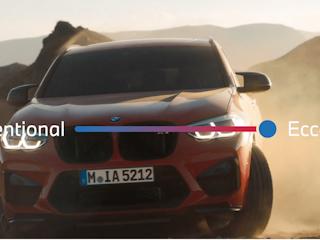Marketing automation and thoughtful integration allow truly connected experiences by:
- Combining offline and online touchpoints to enrich client profiles
- Driving customer touch points before, during and after physical experiences
Connected Experiences drive deeper, more engaged customers who spend more and spend more, more often.

1 https://www.omnisend.com/resources/reports/omnichannel-marketing-automation-statistics-2019/
Connected Experiences: The Omnichannel Context
For years, digital experiences have been a ubiquitous part of consumers’ experience with brands. Now, more than ever, we are observing the convergence between the digital and physical worlds, and the impact on the customer experience has been profound. Some of the more well-known examples of this physical-digital convergence include: Audi’s V/R auto showroom, Amazon Go’s sensor-triggered automated checkout, Target’s personalized in-store mobile commerce, and many others. Fundamentally, the role of the physical store has changed in adaption to continually evolving customer demands.
In the past, the brick-and-mortar storefront had functioned primarily as a transactional endpoint within the customer journey, yet this reality is changing. Digital and mobile commerce have boomed, and consumers have come to expect personalization, timeliness, relevance, and value across all touchpoints with a brand during their buying journey. In reaction to this demand for connected experiences, physical stores are evolving to become experience hubs, and a greater number of purchases are being transacted through digitally-enabled channels. Forward-thinking retailers are rapidly evolving their marketing practices to take advantage of the shift to connected experiences.
We look at how three marketing technology considerations—offline-online data tracking, customer data unification, and marketing automation practices—can help organizations match consumer expectations in a physical-digital world.
Case study: Dolby SoHo

Dolby SoHo is an experiential pop-up space where science meets art meets technology in the SoHo neighborhood of Manhattan, New York. At Dolby SoHo, visitors can experience an interactive digital showcase of audio, imaging, and voice installations that feature Dolby’s ground breaking technologies in cinema, home theatre, computing, mobile, and gaming.
Challenge: Deliver a marketing solution and set of operating procedures to enable the Dolby team to leverage offline and online user data, and activities, to support a more digitally mature approach to promoting Dolby SoHo.
Solution: Valtech delivered a marketing automation strategy and implementation, integrating a third-party platform to track offline user actions taken at Dolby SoHo. Built on the Optimizely product suite, Valtech’s solution unifies both offline and online audience data within a unique customer profile to drive audience segmentation and personalization of automated communications touchpoints.
Outcome: With an advanced marketing automation implementation, Dolby now has the ability to segment audiences in a highly granular fashion—enriched by data such as event attendance, user interests, and online behavior—to deliver personalized messaging by journey stage, in a scalable way.
Digitally measuring offline customer activity
The advancement of offline analytics technologies—such as Wi-Fi analytics—has enabled marketers to capture new and valuable data points about their audiences within a physical environment.
In the context of a retail store or pop-up space, examples of measurable offline metrics include foot fall, dwell time, popular visit times, and customer churn prediction. Wi-Fi analytics platforms can even differentiate between anonymous and known visitors—i.e. those who have previously converted through a digital touchpoint and have provided personal information, such as an email address.
These offline data points can provide great insight into: customer interests, propensity for purchase, identifying new vs. returning customers, other locations customers have visited, and more.
Integrate offline with online data inside of a unified customer profile
Measuring offline analytics, while providing visibility into a blind spot of many marketers, does not wholly deliver a 360-degree view of the customer, alone. However, audience physical data can be merged with, and used to augment, available back-office data stored within existing marketing automation platforms, ERPs, CRMs, clienteling solutions, or other enterprise platforms to build a more holistic profile of their customer.
It is also key to consider a technical integrations and data strategy to achieve unification of customer data within a single source of data truth, such as within a: CDP, data lake, data warehouse, or other repository, as appropriate.
By amalgamating physical and digital data sources, marketers can build detailed customer profiles, enable advanced segmentation of audiences, and use collected data to inform personalization of marketing programs.
Valtech offers a proprietary solution to help organizations integrate offline and online data seamlessly to deliver a truly omni-channel experience for their customers.
Learn more about Valtech_Vantage >
Engaging audiences with marketing automation
Marketing automation is a key, high-value component to an omni-channel enabled marketing practice. With a solid marketing automation strategy and implementation, marketers can truly action upon the aforementioned approach to customer data tracking and unification to deliver highly effective marketing programs. Numerous opportunities abound to engage and convert audiences, optimize programs, and to maximize customer loyalty and advocacy.
With regard to direct response efforts, highly targeted upsell and cross-sell programs can be delivered through marketing automation to prompt the purchase of relevant products or services. Further, detailed segmentation logic and dynamic content can be built into automation workflows to devise customized promotions based on transactional, demographic, or online behavior. Together, with appropriate data governance and maturity, the foundation can be paved for predictive modeling to further enhance marketing automation efforts.
A marketing automation platform connected to unified customer data also benefits marketing program optimization efforts. This could include touchpoint optimizations to ensure that personalized, one-to-one messaging is delivered via the most optimal channel for the audience and context (e.g. email, SMS, push notification, or other), or that the highest value or most loyal customers can be prioritized to support growth objectives.
About Valtech’s marketing automation offerings
Marketing automation is a core part of many organizations’ digital strategy and promises the vision of being able to deliver personalized, one-to-one messaging at scale. Valtech specializes in delivering transformative solutions to help organizations evolve their marketing automation maturity and campaign strategy to unlock untapped value within their marketing technology investment.








